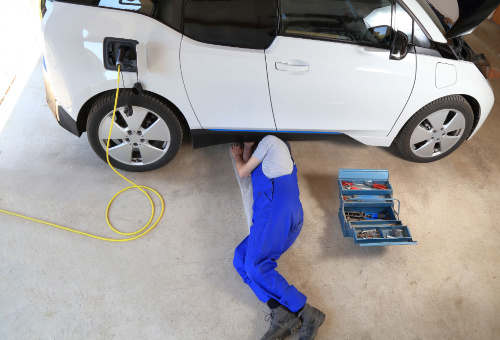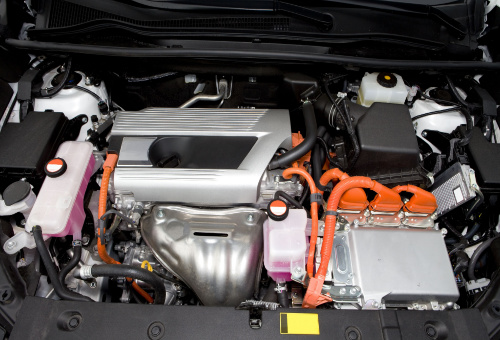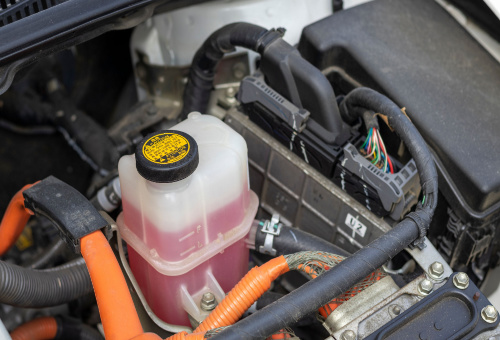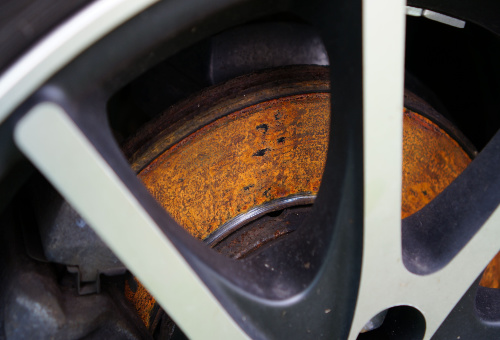
Although the market for hybrid and electric vehicles in Australia is still minuscule in comparison to the market for combustion vehicles, this situation will change rapidly over the next few years as fuel prices rise to unaffordable levels. Against this background, it might appear that many of us will lose our jobs as the market changes, but the truth is that hybrid and electric vehicles are ultimately just vehicles with alternative power plants. These vehicles still have suspension and steering systems, brake systems, wheel bearings, drive shafts, and many other components that still need regular service and repair.
Even if you have never worked on hybrid and/or electric vehicles before, we in the independent repair industry can service, repair, and maintain many, if not all of these “traditional” systems using the same methods and tools we use to repair and service combustion vehicles.
From this perspective, it is unlikely that the switchover to electric and hybrid vehicles will cause large-scale job losses, and in this article, the first in a two-part series, we will discuss some of the things we in the independent repair industry can do to service, repair, and maintain both hybrid and electric vehicles safely and profitably. Before we get to specifics though, there are a few safety aspects to consider and keep in mind, so let us look at some -
Hybrid and electric vehicle battery packs work on voltages that range from about 200V to as high as 600V in some cases. These voltages are sufficient to cause instant death by electrocution if you get things wrong, so to prevent this, all manufacturers have developed specific methods to power their vehicles down safely.
These methods range from disconnecting the battery pack from the high-voltage system by pulling a type of contact breaker, to discharging high-capacity capacitors that carry enough current to cause serious injuries, and even fatal electrocution if they are not discharged safely. So why is any of this important if we are talking about servicing brake and steering systems?
It is important for two reasons. The first is that some manufacturers demand that the high voltage systems on their vehicles be depowered completely before any work is performed on the vehicle. The second reason is that you need dealer-level service information to depower an electric vehicle safely. (important to disconnect the active plug - some vehicle have remote start from mobile phone so this is an important step).
However, this is not a requirement on most hybrid and many electric vehicles, and as long as we stay away from the HV battery pack and any orange-coloured cabling and the things they are connected to, we can repair, service, and maintain many of the systems, parts, and components on these vehicles safely.
So, having reminded ourselves of some basic safety considerations, let us look at the systems on hybrid and electric vehicles we in the independent repair industry can service and maintain, starting with-

Although hybrid technology is widely regarded as a kind of stopgap measure pending the large-scale adoption of purely electric vehicles, the fact is that large-scale adoption of electric vehicles is not imminent in Australia, and as a result, internal combustion engines will be with us for a long while yet.
If you have never worked on hybrid vehicles before, it will help to remember that the combustion engines in these vehicles are just combustion engines that work and fail in the same ways as engines in conventional vehicles. Apart from a few tweaks that are now becoming common, such as electric coolant pumps, the engines in hybrids have the same service requirements as engines in conventional vehicles. Let us look at a few of these requirements-
Engine lubrication
As with conventional vehicles, the engines in hybrids are subject to service schedules that are dictated by manufacturers. As such, regular oil and filter changes at the times/distances indicated in the service schedule are as important for hybrid vehicles as they are for conventional vehicles.
One thing to keep in mind is that among other advanced products, Castrol has developed a range of so-called e-fluids that include engine oils, transmission fluid(s), coolants for various purposes, and even brake fluid. While it is tempting to use some, or all of these fluids during hybrid servicing, doing this would be a mistake. As a practical matter, e-fluids were developed in conjunction with car manufacturers primarily to meet the lubrication and cooling demands of purely electric vehicles, which we will discuss a bit later on.
So, having said the above, the best thing to do when doing a lubrication service on a hybrid vehicle is to use the fluids that are recommended by the vehicle’s manufacturer. This requires using oil and oil filters from trusted suppliers like Castrol and Ryco, whose filters and other products such as air and fuel filters meet, and often exceed OEM specifications. Moreover, products from these suppliers are explicitly designed to withstand and cope with the harsh local conditions.
Cooling system service

While the cooling systems of conventional vehicles are relatively simple and uncomplicated, the cooling systems on hybrid vehicles are another matter entirely. For example, the overall cooling system on a Toyota Prius consists of 5 distinctly separate cooling systems, 16 major components, 20 or so coolant hoses, and two electrically operated coolant pumps.
The above is quite a mouthful, and while we cannot delve into all the complexities of hybrid engine cooling systems here, it helps to have at least a basic understanding of what each of these systems does; below are some details-
So why is any of this important? It is important because a cooling system service on a hybrid vehicle requires extreme attention to detail. From the above description, it is obvious that such a complex system offers many opportunities for things to go wrong, and it is easy to miss one more small defects that could eventually have a major impact on the operation of the overall cooling system.
As with most things, there is an upside, and in this case, it is the fact that unless there are fault codes present, a cooling system service or inspection on a hybrid vehicle is a relatively straightforward affair. Typically, this inspection involves checking and perhaps topping up the coolant, and performing a thorough visual inspection of the system to detect defects like coolant leaks, damaged hoses, loose or damaged hose clamps/clips, and the like. As a practical matter, inspecting the cooling system on a hybrid vehicle is just like inspecting the cooling system on a conventional vehicle, but with the difference that you have more things to look at.
However, replacing the coolant in a hybrid vehicle is another matter entirely. While it is possible to do this successfully in an independent workshop, we do not recommend that anyone attempt this procedure without having access to dealer-level service information. The likelihood of trapping air in the system is extremely high so use extreme caution when refilling a hybrid cooling system, which brings us to-
Other cooling requirements
Due to their mode of operation, the transaxles of many hybrid vehicles are equipped with dedicated cooling systems, which in most cases share the vehicle’s radiator with the engine cooling system. While this system is relatively uncomplicated and easy to inspect or service, it should be borne in mind that in most cases, the coolant in the transaxle is different from the coolant in the engine cooling system.
Replacing this coolant is relatively easy, but be sure always to use the coolant specified by the manufacturer to prevent the transaxle from overheating. If there is any doubt about which coolant to use, it is always a good idea to consult resources such as the technical pages offered by Castrol to prevent potentially expensive mistakes.
High Voltage Battery Pack Cooling
Manufacturers use different strategies to monitor and control the HV battery pack’s temperature. For example, some manufacturers use cooling plates or large heat sinks to dissipate the battery’s temperature, while others, like Toyota, use several fans that circulate air drawn air from the passenger compartment around the battery to manage its temperature. Recently, though, some manufacturers have begun using liquid cooling systems, in which a highly advanced dielectric coolant circulates directly through the battery. In these systems, the coolant is in direct contact with each cell in the battery pack, which not only greatly increases the coolant’s effectiveness, but also reduces charging times significantly.
The point is that it is easy to inspect air-cooled systems to verify that all air vents are open and that all fans are working, or that air circulates freely over and through heat sinks and cooling plates. In fact, this inspection is an item in hybrid vehicles' service schedules, but liquid-cooled systems should be approached with some caution. For instance, the coolant in these systems is a so-called e-fluid: a mixture of dielectric fluids that should under no circumstances be substituted for anything else. Doing this could cause internal short circuits in the battery pack and the inevitable result of that is battery failure, or even a battery fire or explosion, which brings us to-
As stated elsewhere, hybrid and electric vehicles have many of the same systems that conventional vehicles have, and in most cases, the service procedures are the same as for conventional vehicles. However, there is one exception to this rule, and this involves the brake systems on hybrids and electric vehicles. On these vehicles, the hydraulic brakes work in the same way as on conventional vehicles, but with the notable difference that their contribution to the vehicle’s stopping power is much smaller than on conventional vehicles. Let us look at some things to keep in mind when-
Servicing brake systems on hybrid and electric vehicles

While brake pads on conventional vehicles have useful lives of only about 50 000 to 60 000km, brake pads on hybrid and electric vehicles routinely last for 200 000km or more because regenerative braking systems have now developed to the point where they supply up to 90 per cent (or more) of a vehicle’s braking force.
In practice, the hydraulic brakes on hybrid and electric vehicles only come into meaningful operation when the vehicle’s speed falls to or below about 35 km/h*, at which point the regenerative braking system cannot recover meaningful amounts of the vehicle’s kinetic energy. However, there are exceptions to this rule, such as -
Given the above, it should be obvious that many hydraulic brake faults and defects caused by limited use of the hydraulic brakes often go undetected, so here is what we should be looking for-
Rusted brake rotors
While rust on brake rotors is not necessarily indicative of a problem, this condition does require a thorough inspection of the brake system to verify the overall condition of the system. Such an inspection should, at a minimum include the following, but bear in mind that as with many conventional vehicles, you may have to put the brake and e-brake systems in Service Mode before starting the inspection/service-
Brake pad replacements on hybrids and EVs
One particularly important aspect to keep in mind is that the brake systems on hybrids and electric vehicles do not get as hot as brake systems on conventional vehicles do. This is an important point since brake pad/brake rotor combinations in conventional vehicles largely rely on high temperatures to produce their peak performance.
Thus, since the brakes in hybrids and electric vehicles do not get as hot, and rarely exceed about 150 degrees Celsius (at the upper end of their operating temperature range) brake pads that require high temperatures to work won’t work in hybrids and electric vehicles.
To address this problem, Bendix, a leading Australian supplier of brake products, has developed a range of friction material formulations specifically for use in hybrid and electric vehicles. We need not delve into the specifics of these formulations here, but suffice to say that Bendix brake pads for hybrids and electric vehicles produce their peak braking performance at low brake temperatures. Therefore, brake pads on hybrids and electric vehicles should never be replaced with pads intended for use on conventional vehicles. Doing this could potentially cause extremely poor braking performance on a hybrid or electric vehicle when a driver in that vehicle needs the brakes to work properly.
Brake rotor replacements on hybrid and electric vehicles
Although there are (as yet) no special requirements regarding brake rotors on hybrid and electric vehicles, it only makes good sense to replace the rotors on these vehicles with rotors that meet and often exceed OEM specifications in terms of form, fit, and function. One such supplier of high-quality, fit-for-purpose brake rotors to the aftermarket is DBA, whose product catalogue covers 98 per cent of the vehicle makes and models that are now on Australia’s roads.
More to the point, though, DBA brake rotors feature a wide variety of innovative and proprietary features that include, among others, anti-corrosion coatings, improved heat dissipation, and patented slot designs that enhance overall braking performance. Therefore, as with brake pads, it is wise to replace brake rotors on hybrid and electric vehicles with the best possible products to ensure reliable, predictable, and consistent braking performance on the occasions that the brakes on these vehicles need to work as intended, which leaves us with-
In Part 2 of this article, we will discuss other aspects of hybrid and electric vehicle maintenance and service that we in the independent repair industry can do safely, and which do not involve HV circuits and/or components. Topics will include battery maintenance, wheel and tyre service, suspension and steering systems, and others, such as wiper replacement.